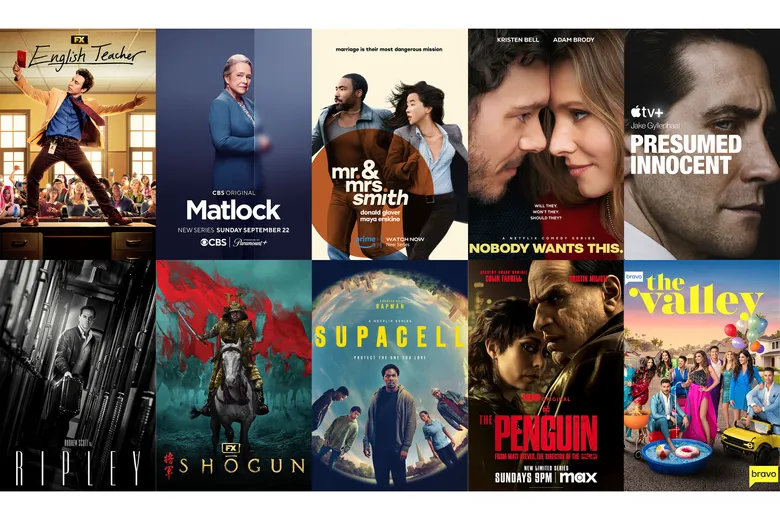Streaming has changed how we watch our favourite shows. Some people like to watch an entire season all at once (binge-watching), while others enjoy waiting for one episode each week. Because of this, many streaming platforms and TV creators are trying out different ways to release their shows—especially the weekly release model.
Releasing one episode every week keeps people excited and talking about the show for a longer time. It helps build suspense and gives fans time to discuss what they saw and what might happen next. In this post, we’ll look at some popular shows that used weekly releases and did well.
Table Of Contents:
TV Release Strategies in the Binge-Watching Era

Today, people watch TV shows in new ways. Some streaming apps like Netflix let you watch the whole season at once. This is called binge-watching. People love it because they don’t have to wait for the next episode. Other apps like Disney+ and HBO release one episode each week.
This helps keep fans excited and talking about the show for a longer time. Both ways are good. Binge-watching gives quick fun, and weekly episodes build more excitement over time. Now, some apps try to mix both styles so everyone can enjoy their favorite shows the way they like.
Case Study 1: “Mandalorian” Releasing Weekly Show

“The Mandalorian” is a Star Wars show that came out in 2019 on Disney+. Instead of putting all the episodes out at once, Disney+ gave fans a weekly show.
Why It Worked:
1. Building Excitement: Fans got really excited every week to see the next episode. Everyone wanted to know what would happen next—especially when Baby Yoda (Grogu) showed up!
2. Social Media Engagement: Every time a new episode came out, people talked about it on the internet. They shared funny pictures (memes), made guesses about the story, and used hashtags like #BabyYoda. This helped more people find out about the show.
3. Sustained Interest: Since Disney+ didn’t show all the episodes at once, people had to come back every week to watch. That way, fans stayed interested in the show for a longer time. It also made people keep their Disney+ subscription.
Impact:
People planned their week around watching the next episode. It felt special—like something fun to look forward to every week. The show stayed popular for a long time because people kept talking about it online. “The Mandalorian” helped Disney+ get more fans and made the show a big part of pop culture.
Case Study 2: “The Late of Us” Releasing Weekly Show
“The Last of Us” is a TV shows that started in January 2023. It’s based on a popular video game. The show was a big hit and many people talked about it every week. Instead of showing all the episodes at once, HBO released one episode each week. This helped make the show even more exciting.
Why It Was So Popular:
1. People Liked to Guess What Would Happen Next: Since there was only one new episode each week, fans had time to think and talk about what might happen next. They shared their thoughts on social media, in videos, and on podcasts.
2. It Made the Story More Exciting: Waiting a whole week for the next episode made the story feel more special. It gave people something to look forward to, like a fun event every week.
3. Everyone Was Talking About It: People from all over the world were sharing ideas, reactions, and even spoilers. This made the show even more popular and helped more people hear about it.
Impact:
Lots of people watched the show and stayed excited about it for the whole season. They didn’t just watch—it made them want to talk about it with others. HBO showed that releasing one episode at a time can help keep a show popular for many weeks.
Case Study 3: “Stranger Things” on Netflix
Netflix usually puts all the episodes of a show out at once so people can watch them all in one day. But for “Stranger Things” Season 4, Netflix did something new. They showed the second part of the season one episode each week.
Why This Was a Good Idea:
1. Fun Endings That Make You Want More: Each episode ended in a surprising way. Fans wanted to see what would happen next, so they got excited to watch the next week.
2. Fans Had Time to Talk: Because it wasn’t all at once, fans talked about the show online every week. They shared ideas, made guesses, and talked about their favorite characters.
3. Not Too Much at Once: Watching lots of episodes in one day can be tiring. Watching one at a time made it more fun and easier to enjoy.
Impact:
This plan worked really well! People kept talking about “Stranger Things” every week. More people kept using Netflix to see what happened next. Even though Netflix usually lets people watch everything at once, this time the weekly plan helped make the show super popular.
Case Study 4: “Andor” on Disney+

“Andor” is a Star Wars show that came out on Disney+ in 2022. It tells the story of what happened before the movie “Rogue One”.
Unlike “The Mandalorian”, which has lots of action, “Andor” is slower and more serious. Disney+ showed one new episode each week.
Why This Was a Good Idea:
1. Time to Learn About the Characters: “Andor” takes its time to tell the story and show how characters grow.
Releasing it weekly helped people understand the story better and talk about each episode.
2. Fans Could Talk About It: Star Wars fans love sharing ideas. Because the show was weekly, fans had time to think about the story, talk about what it means, and guess what would happen next.
3. Slower, But Deeper Story: The show wasn’t fast or full of fights all the time. Showing it week by week, he told fans, “This is a deep story—take your time with it.” That helped people enjoy the slow but powerful storytelling.
Impact:
Because it came out weekly, “Andor” stayed popular for many weeks. Fans didn’t rush through it—they spent time thinking about each episode. This helped more people hear about the show and start watching it too. Even though it was a slower Star Wars story, the weekly release made it more special and helped the show grow its fanbase.
Case Study 5: “The White Lotus” on HBO
“The White Lotus” is a TV shows about rich people staying at a fancy hotel. It became very popular, and many people watched it every week. HBO showed one new episode each week, which helped keep the show exciting.
Why It Worked:
1. Social Media Buzz: After each episode, fans guessed who might be the next person in trouble. They posted ideas and theories on social media, and lots of people joined the conversation.
2. Fun to Talk About with Others: Each episode had surprises or cliffhangers. Friends, families, and coworkers talked about it in real life and online—just like people used to do with old TV shows.
3. Waiting Made It More Exciting: Because people had to wait a week for the next episode, it made the show feel special.
Everyone looked forward to the next part of the story.
Impact:
Every week, more and more people talked about “The White Lotus.” The show stayed popular for a long time because people didn’t just watch it—they talked about it too. It also made people excited for the next season!
Advantage and Disadvantage of Show Weekly Schedule

Advantage:
- Keeps Fans Excited: Fans look forward to each new episode.
- Builds a Fan Community: Fans talk and share ideas on weekly show.
- Keeps Viewers Coming Back: Fans stay subscribed longer.
- Builds Suspense: Fans stay curious about what will happen next.
Disadvantage:
- Harder to Compete: Shows that release all episodes at once might get more viewers.
- May Lose Viewers: Some fans forget or lose interest.
- Can Be Frustrating: Waiting for the weekly show can be annoying.
- Slower Story: Some episodes might feel boring.
Conclusion
Many streaming platforms like Disney+, HBO, and Netflix now release TV shows one episode each week instead of all at once. This is called the weekly show release model. Shows like The Mandalorian, The Last of Us, Stranger Things, Andor, and The White Lotus use this style to keep fans excited for longer. When people get only one episode at a time, they have fun talking about it, guessing what will happen next, and sharing their thoughts online. This helps the show stay popular for many weeks. Even though binge-watching is fun, weekly show help fans enjoy the story little by little and stay connected to the show.

